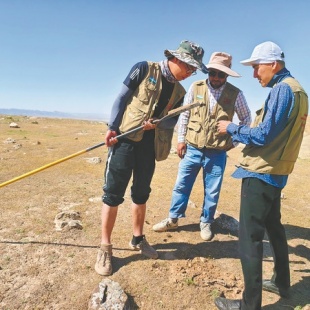Sands of time reveal secrets


Working with Central Asian counterparts, he and his team have gradually put together some of the jigsaw pieces scattered along the Silk Road, producing a new perspective on studies of its routes, and revealing cultural exchanges from past to present.
"For a long time, the modern study of the ancient Silk Road seems to be led by Western countries," Wang says. "But since this network of ancient trade routes connected the East and the West, the voices of Asian scholars, especially from the routes' starting points in China, are at least of equal importance."
Central Asia was a core section on the ancient Silk Road. Since it is located in the middle of the Eurasian continent, it serves as an intermediary between Eastern and Western civilizations, and many different ethnic groups and cultures converge on the region, Wang says.
Following in Zhang's footprints, Wang and his team started by looking for the Greater Yuezhi, to clarify its history. The group is only recorded in Chinese literature, and the whereabouts of any remains associated with it were unknown to archaeologists. In 2000, they began excavations in northwestern China, where they were able to identify the main Greater Yuezhi settlement on the eastern edge of the Tianshan Mountains. They continued their work in Central Asia, discovering the remains of a Central Asian kingdom that existed from the 1st century BC to the 5th century AD, and known in Chinese as Kangju, at the Sazagan Site in Samarkand, Uzbekistan. They also found a Greater Yuezhi site to its south at the Rabat Site in Boysun, Uzbekistan.
Wang's team has proposed new theories and methods for studying nomadic groups based on their experience, which focuses on seeking settlements. "Unlike the normal understanding that nomadic people generally didn't maintain stable settlements, we discovered that those living in the Eurasian grasslands did, so they could rest during the winter," Wang says.
"The region can be extremely cold for long periods of time in winter, so how could nomadic people continue to use pastures? As a result, we believe they sought warmth in settlements, to prevent their livestock from freezing. Such a great loss would affect them for life," he adds.





































